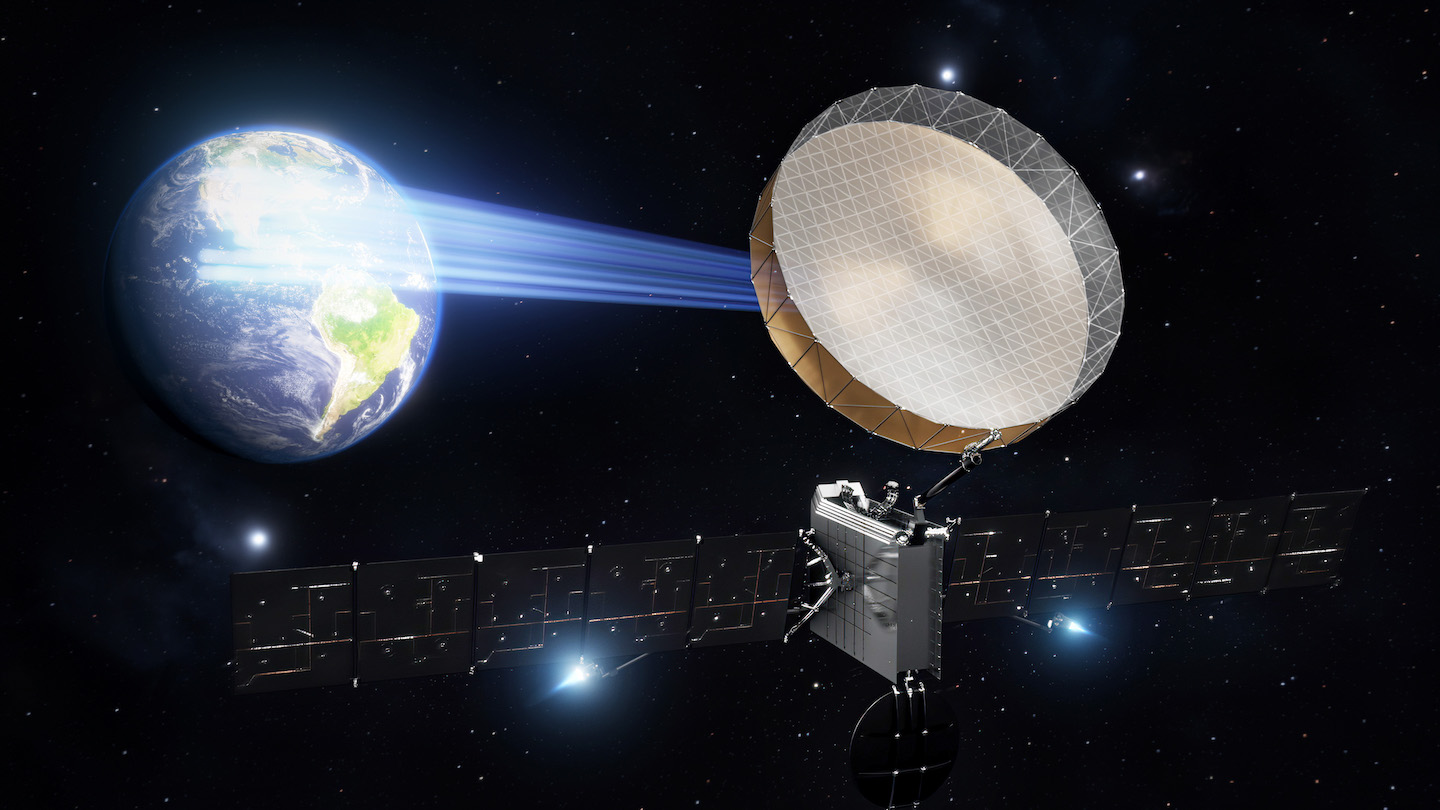Latest News

The Astranis Omega satellite. Photo: Astranis
Astranis debuted a more powerful Geostationary Orbit (GEO) satellite on Wednesday, called Omega. The next-gen satellite maintains the smaller form factor of the Astranis MicroGEO compared to traditional GEO satellites, but the company said it can deliver 50+ Gbps of throughput per satellite, about five times the capacity of the first Astranis model. The first satellites are set to launch in 2026.
Astranis did not share details on the price of the satellite, but CEO John Gedmark told Via Satellite that the lower price for capacity will make dedicated satellite connectivity possible for new customers.
“The demand for broadband connectivity is almost unlimited. People just need as much of it as they can get. Being able to put up 50 gigabits of capacity per second at a time and get that capacity to our customers that much faster, is a game-changer,” Gedmark said. “We’re very confident that we can get to a lower price point than they’ve been offered before.”
Omega has a software-defined radio, which the company said enables more flexibility and dynamic coverage. In addition, the payload supports the Protected Tactical Waveform and other government waveforms. It is intended to be a dual-use technology for both government and commercial customers.
Astranis made the shift from traditional traveling wave tube power amplifiers (TWTA) to a solid-state power amplifier (SSPAs), custom designed by the company. Gedmark said the change gives Astranis more capability, flexibility, shorter lead times and lower cost for the payload. The satellite also now has all electric propulsion, using an ion thruster, which he said gives more capability for orbit relocations, to reach GEO and higher orbits.
More of the satellite is now built in house. While the first satellite was about 50% in-house, the Omega satellite will be 70% built in-house.
“We’ve always understood that the time to market is incredibly important,” Gedmark said. “Being able to move to components that will have a much shorter lead time moving forward, compared to the long time that we’ve had in the past, allows us to get satellites out the door that much faster.”
Astranis will still operate on the same model, where it builds and operates the satellites, and sells the capacity to customers.
“We’ve seen just a huge amount of demand for that specific case. We feel confident we can drive prices down to where there are a lot of customers that wouldn’t be able to afford it otherwise,” Gedmark said. “We’re able to do that because we’re constantly pushing the envelope on the technology and constantly improving the designs and capabilities of the satellites.”
Astranis, which ran into issues with its first satellite launched last year, is readying for four satellites of its MicroGEO model to launch in 2024, and more for the five satellites to launch in 2025. The new model Omega will launch in 2026.
Get the latest Via Satellite news!
Subscribe Now